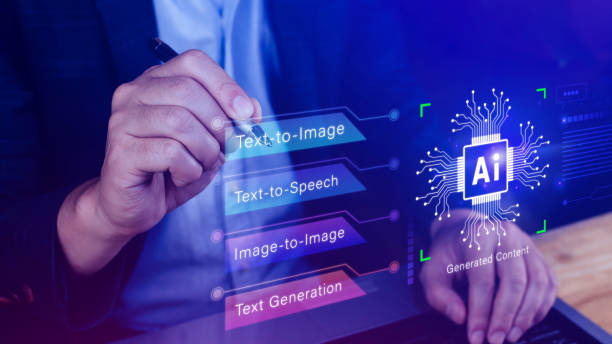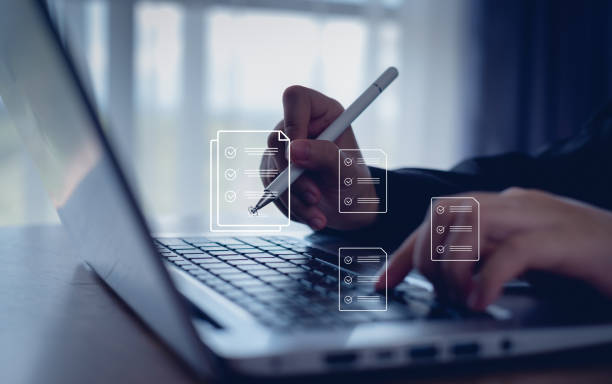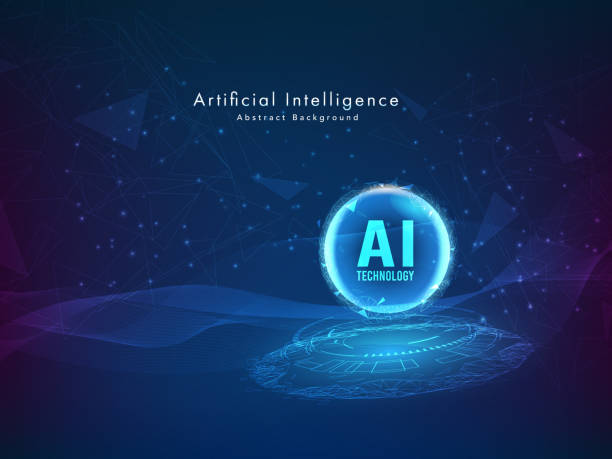An Introduction to the Concept of AI Robots and Their Place in the Current Era
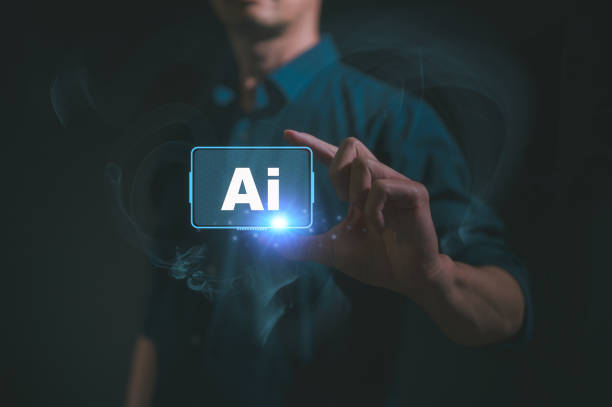
In today’s world, which is rapidly moving towards technological advancements, AI robots have become a central topic of discussion.
These autonomous entities, a combination of robotics and artificial intelligence capabilities, demonstrate unparalleled abilities.
From factory production lines to smart homes and hospitals, the footprint of AI robots is clearly visible.
This introduction explains how intelligent robots are defined and why they are currently of particular importance.
They are not merely programmed machines; rather, they possess the ability to understand, analyze, and make decisions based on data, a capability previously exclusive to humans.
The main goal of developing AI robotics is to improve efficiency, increase accuracy, and reduce human error in various processes.
These robots can undertake repetitive, dangerous, or tedious tasks, allowing humans to focus on more creative and strategic work.
Understanding the potential and limitations of this emerging technology is essential for everyone in the current era.
AI robots are not only tools for automation but also partners in the process of human evolution.
Does your company website create a professional and lasting first impression on potential customers? RasaWeb, with its professional corporate website design, not only reflects your brand’s credibility but also paves a path for your business growth.
✅ Build a powerful and reliable brand image
✅ Attract target customers and increase sales
⚡ Get free consultation
The Evolution and Novel Applications of AI Robots in Various Industries
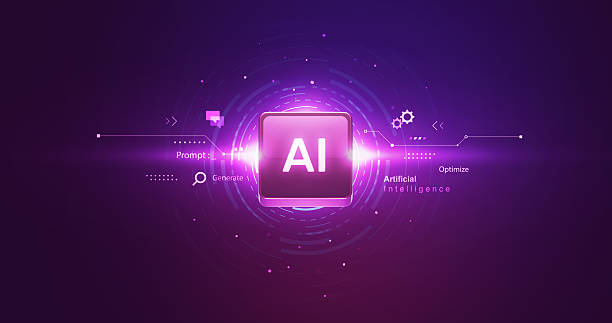
The history of robotics began with imaginative ideas in literature and became a reality with advancements in mechanical and electronic engineering.
However, the major turning point was when artificial intelligence was added to these machines.
Today, the application of AI robots has transcended traditional boundaries and entered fields such as medicine, agriculture, services, and even art.
In medicine, surgical robots enable complex operations with unparalleled precision, and nursing robots assist the elderly and patients.
In agriculture, smart robots can optimize irrigation and fertilization and even harvest crops, significantly increasing productivity and reducing waste.
These developments signify a major leap in technology application.
AI robots have the ability to learn from their environment and adapt to new conditions, making them ideal for dynamic and complex applications.
From logistics robots in large warehouses to explorer robots in space, all are examples of the expanding reach of this technology.
Utilizing advanced machine learning algorithms and neural networks, they can recognize patterns and make accurate predictions.
These advancements not only improve the quality of human life but also create new job opportunities in the fields of robotics and AI development and maintenance.
Specialized articles indicate that AI robots are the backbone of the Fourth Industrial Revolution.
Challenges and Opportunities Facing Smart Robots in Society
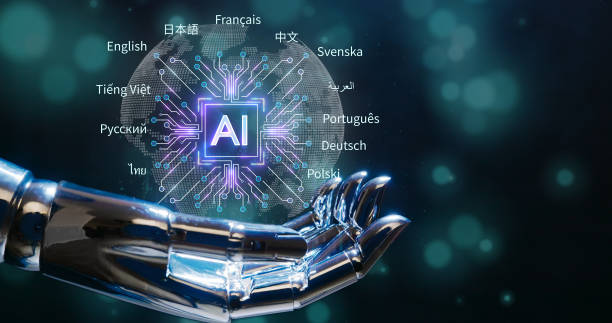
The widespread development and deployment of AI robots, despite all their advantages, also bring significant challenges that require deep attention and discussion.
One of the most important challenges is their impact on the job market and the potential for replacing human jobs, which raises thought-provoking content.
Are robots a threat to employment or do they create new opportunities? On the other hand, ethical issues related to autonomy, accountability, and data privacy are also major concerns.
How can we ensure that smart robots operate in an ethical and transparent manner? Nevertheless, there are numerous opportunities in this field.
AI robots can play a role in solving complex global problems such as climate change, discovering new drugs, and increasing access to education and healthcare.
This analysis must not only address concerns but also provide strategies for the optimal utilization of this technology.
Global studies show that with proper planning, these challenges can be overcome, and a brighter future can be achieved.
It is necessary for policymakers, developers, and the general public to engage in constructive dialogue to find appropriate solutions for managing this massive transformation.
Accepting this technology requires a balance between innovation and social considerations.
| Advantages | Challenges |
|---|---|
| Increased accuracy and reduced error | Impact on the job market and employment |
| Increased productivity and speed | Ethical issues and accountability |
| Performing dangerous tasks for humans | Privacy and data security |
| Access to large data and its analysis | Need for high initial investment |
Components and Functioning of AI Robots
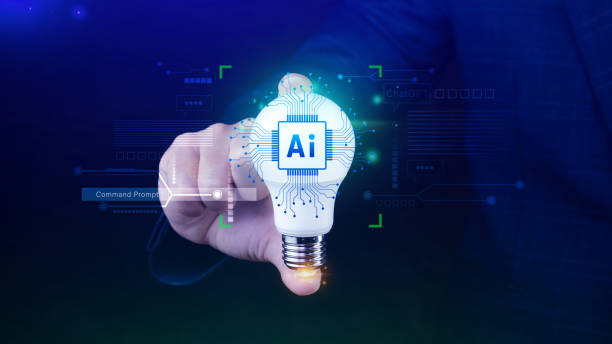
To gain a deeper understanding of the functionality of AI robots, it is necessary to become familiar with their main components.
Every intelligent robot typically consists of three key parts: sensors, actuators, and a central processing system that utilizes artificial intelligence algorithms.
Sensors are responsible for collecting information from the surrounding environment; this information can include visual data (cameras), auditory data (microphones), tactile data (pressure sensors), and other physical data.
Actuators are the parts that enable the robot to move or perform physical operations, such as robotic arms, wheels, or motors.
The heart of an intelligent robot is its central processing unit, which uses algorithms from Machine Learning, Deep Learning, and Natural Language Processing (NLP) to analyze data received from sensors and make necessary decisions to control the actuators.
These systems allow AI robots to learn from their past experiences, recognize patterns, and even make predictions for the future.
For example, an autonomous robot uses sensors to identify its environment, AI algorithms for navigation and decision-making, and actuators for movement.
This specialized explanation shows how hardware and software work together in an intelligent robot to create amazing capabilities.
The ability of these robots to process data quickly and accurately has made them powerful tools in many fields.
Does your company website create a professional and lasting first impression on potential customers? RasaWeb, with its professional corporate website design, not only reflects your brand’s credibility but also paves a path for your business growth.
✅ Build a powerful and reliable brand image
✅ Attract target customers and increase sales
⚡ Get free consultation
AI Robots in Industry and Manufacturing: The Smart Automation Revolution
![]()
Industry and manufacturing have been pioneers in utilizing AI robots.
For years, industrial robots played a significant role in assembly lines, but with the advent of artificial intelligence, these robots have gained capabilities beyond merely repeating a pattern.
Today, we are witnessing the emergence of collaborative robots (Cobots) that can work alongside humans with high safety and efficiency.
These intelligent robots, using advanced sensors and AI algorithms, can detect human movements and synchronize with them, leading to increased productivity and reduced human errors.
In smart factories, AI robots are responsible for tasks such as visual quality control, material handling, welding, and painting.
They can analyze production data in real-time and make necessary adjustments to optimize the process.
This specialized application not only increases production speed but also enhances product quality.
The ability of these robots to learn from their environment and adapt to changes makes them ideal for dynamic manufacturing environments.
For example, if a defect occurs in a part, the smart robot can quickly identify it and take necessary actions to fix the problem or discard the defective part.
This helps maintain high production standards and reduce resource waste.
The paradigm shift from mere automation to intelligent automation will shape the future of industry.
The Role of AI Robots in Daily Life and Homes: Assistants of the Future
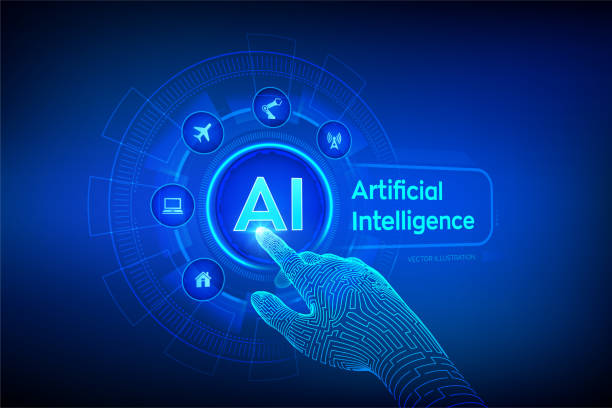
Beyond industrial environments, AI robots are increasingly entering our daily lives.
From intelligent voice assistants like Alexa and Siri, which are essentially AI software, to robotic vacuum cleaners and service robots in hotels and restaurants, this technology is changing how we interact with our surroundings.
In smart homes, AI robots can act as personal assistants, manage daily schedules, provide home security, and even perform household chores.
This entertaining yet guiding aspect of smart robotics application enhances the living experience.
Imagine a robot that can prepare your coffee based on your habits, read morning news, or even play educational games with your children.
In the realm of entertainment, AI robots have emerged as smart toys, pet companions, or even artists capable of creating music and paintings.
They are not only for leisure but can also assist in learning and skill development.
These robots, with facial recognition, natural language processing, and autonomous navigation capabilities, are gradually becoming an integral part of our living environment, helping us with daily tasks and making life easier and more enjoyable.
A future where robots are present in every home is no longer a dream.
Training and Programming for AI Robots: Entering the World of Innovation
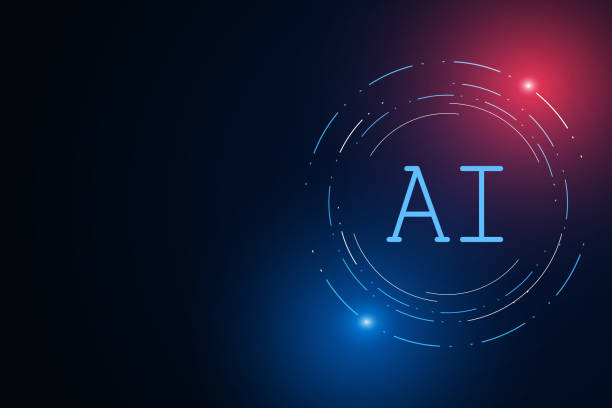
For those interested in entering the field of robotics and artificial intelligence, training and programming AI robots is an exciting path.
This guide explores the necessary skills and available tools for developing these robots.
Learning programming languages like Python, which is very popular in AI due to its simplicity and powerful libraries, is considered the first step.
In addition to Python, languages like C++ are widely used for controlling robot hardware.
Familiarity with machine learning frameworks such as TensorFlow and PyTorch is also essential for developing AI algorithms.
Integrated Development Environments (IDEs) and robotic simulators help engineers model and test robot behavior before physical implementation.
Training related to robotics and AI includes courses in mechanics, electronics, computer science, and advanced mathematics.
Participating in workshops, online courses, and practical projects can help gain hands-on experience in this field.
The future of this field is bright and offers countless job opportunities for skilled individuals.
This specialized area requires a combination of theoretical knowledge and practical skills to build robots that are truly intelligent and useful.
Entering this field places you at the forefront of innovation.
| Tool/Language Type | Examples | Primary Use |
|---|---|---|
| Programming Languages | Python, C++, Java | Algorithm implementation, hardware control |
| AI/ML Frameworks | TensorFlow, PyTorch, Scikit-learn | Development of machine learning models and neural networks |
| Robotic Operating Systems | ROS (Robot Operating System) | Communication between robot hardware and software |
| Simulation Environments | Gazebo, Webots, CoppeliaSim | Testing and development of robots in a virtual environment |
Future of Jobs and Society with Smart Robots: Opportunities or Threats?
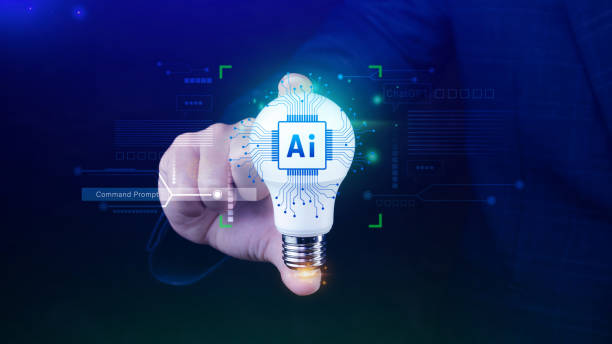
The increasing presence of AI robots in society raises important questions about the future of jobs and our social structure.
Will these robots lead to widespread unemployment or create new job opportunities? This thought-provoking content requires a comprehensive analysis.
While some repetitive and manual jobs may be replaced by automation, the need for new skills in the development, maintenance, training, and supervision of smart robots will significantly increase.
Robotics engineer, AI specialist, AI ethicist, and data analyst are just some of the professions emerging with this technology.
Furthermore, AI robots can help improve the quality of social life; for example, in healthcare services, care for the elderly, and individuals with special needs.
These changes require a redefinition of human roles and investment in education and training to prepare the future workforce.
Societies must be ready to adapt to these changes and implement policies that facilitate workforce transition and protect individual rights.
Research shows that adaptable economies can leverage this transformation to their benefit and increase overall well-being.
The path ahead requires a smart and comprehensive approach.
Do you know that the first impression customers have of your company is your website? With a powerful corporate website from RasaWeb, multiply your business credibility!
✅ Custom and eye-catching design tailored to your brand
✅ Improve user experience and increase customer attraction
⚡ Get a free consultation!
Ethical and Legal Considerations in the Development and Application of AI Robots
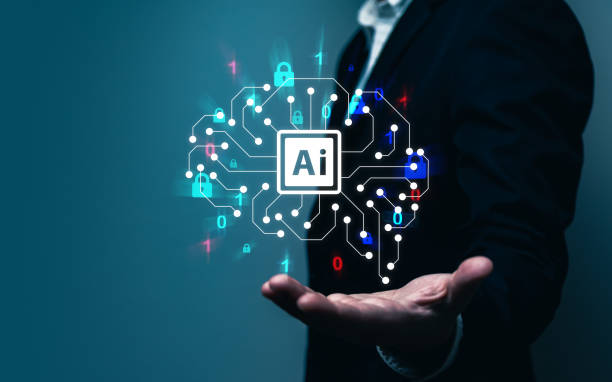
Alongside the significant advancements in the field of AI robots, complex ethical and legal issues arise that cannot be overlooked.
Accountability for accidents caused by autonomous robots, discrimination and bias resulting from AI algorithms, and the privacy of data collected by these robots are among the most important concerns.
Who is responsible for the error of a self-driving robot? How can we ensure that intelligent robots are designed to promote human values rather than cause harm? This explanatory and specialized aspect of the topic requires strong legal and ethical frameworks.
Many countries and international organizations are developing guidelines and regulations for governing AI and robotics to prevent potential misuse and encourage responsible development.
Issues such as algorithmic transparency, explainability of robot decisions, and the possibility of reviewing their performance are of paramount importance.
Respect for human rights, justice, and fairness must be at the core of the design and implementation of every AI robot.
These considerations are not only essential for protecting society but also vital for gaining public trust and ensuring widespread adoption of this technology.
AI ethics is a growing field that seeks to answer these fundamental questions.
Future Outlook and Potential Advancements in Robotics and Artificial Intelligence
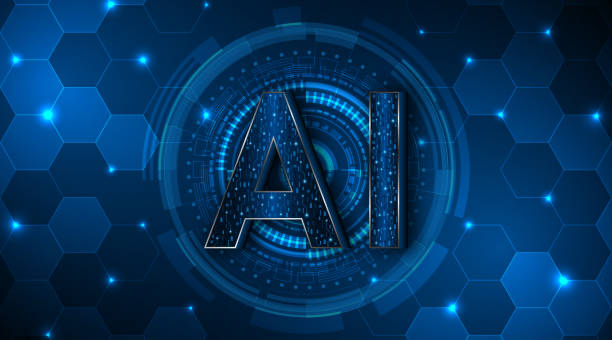
The future of AI robots opens up infinite horizons of innovation before us.
Advancements in Artificial General Intelligence (AGI), which aims to create intelligence equal to or beyond human intelligence, could lead to the emergence of robots with extraordinary learning and reasoning capabilities.
This analysis provides a look at the future prospects of this technology.
It is expected that robots will significantly improve their physical and cognitive abilities in the near future, making their interaction with humans much more natural and efficient.
Potential advancements include the development of robots with touch-sensitive artificial skin, improved navigation capabilities in complex environments, and more advanced capabilities in understanding and generating natural language.
Smart robots will also play a key role in space exploration, the development of new drugs and solving environmental crises.
New news and reports constantly announce amazing achievements in this field.
Collaboration between humans and robots, instead of complete replacement, will become a dominant model.
These advancements require massive investments in research and development, as well as international cooperation to ensure responsible and inclusive development.
Scientists and researchers worldwide are striving to realize this vision, and every day we witness pushing the boundaries of current knowledge in robotics and artificial intelligence.
A future where machine intelligence serves humanity is closer than ever.
Frequently Asked Questions
| Question | Answer |
|---|---|
| What is an AI robot? | It is a robot that uses artificial intelligence capabilities to understand its environment, reason, learn, and make decisions to perform complex tasks autonomously. |
| What is the main difference between a regular robot and an AI robot? | AI robots can learn and adapt to their environment, while regular robots typically operate based on fixed, predetermined programming. |
| In what fields are AI robots used? | In fields such as industry (production lines), medicine (robotic surgeries), services (customer support, smart vacuum cleaners), exploration (space and underwater), and entertainment. |
| How do AI robots learn? | They acquire new skills by analyzing large data sets and identifying patterns through Machine Learning and Deep Learning algorithms. |
| Can AI robots have emotions? | Currently, no. They can identify or simulate emotions, but they do not experience genuine emotions like humans. |
| What are the main advantages of using AI robots? | Increased productivity, reduced human error, performing dangerous or repetitive tasks, and providing new and efficient services. |
| What challenges exist in the development of AI robots? | The need for abundant and high-quality data, complexity of algorithms, ethical issues, cybersecurity, and high research and development costs. |
| Are AI robots dangerous to humans? | No, if safe design principles and ethical regulations are followed. Concerns are mostly related to social and economic impacts, such as changes in the job market. |
| What is an example of an AI robot in daily life? | Smart robotic vacuum cleaners (like Roomba) that automatically map and clean the house, or smart voice assistants (like Siri and Alexa). |
| How is the future of AI robots predicted? | They are expected to become smarter, more autonomous, and capable of more complex interactions with humans, playing a more significant role in industry, medicine, transportation, and daily life. |
And other services of RasaWeb Advertising Agency in the field of advertising
Smart Marketing Automation: An effective tool to improve SEO ranking by precise audience targeting.
Smart Direct Marketing: An innovative platform for improving SEO ranking with marketing automation.
Smart Direct Marketing: Revolutionize click-through rate increase with Google Ads management.
Smart Content Strategy: A dedicated service for growth in customer acquisition based on key page optimization.
Smart Website Development: A novel service for increasing campaign management through key page optimization.
And over hundreds of other services in internet advertising, advertising consultation, and organizational solutions
Internet Advertising | Advertising Strategy | Advertorials
Sources
Artificial Intelligence and the Future of Humanity
Smart Robots and Their Role
Robotics Advancements in Iran
The Impact of Smart Robots on Industry
🤖 RasaWeb Afarin Digital Marketing Agency specializes in enhancing your business in the online space. From fast and professional website design to SEO optimization and advertising campaign management, we pave your path to digital success.
📍 Tehran, Mirdamad Street, next to Bank Markazi, Kazeroon South Alley, Ramin Alley, No. 6

